Simone Inzaghi is guiding Internazionale to run away with the Serie A title in remarkable fashion. After a heartbreaking Champions League final defeat to Manchester City last season, Inter has been propelled to greater heights as they have bloomed into one of the teams in Europe who are ruthless goalscorers and resilient defenders.
Inzaghi has constructed a complex tactical system that plays entertaining football while being effective on the field. The team follows positional principles that see Inter players constantly rotating, exemplified by extreme situations where defenders and midfielders alternate positions during the build-up phase.
Nevertheless, the system is more intricate than a few rotations. The Nerazzurri cut through defensive structures by one of many methods, including switches of play after drawing the opposition to one side, finding attackers between the lines to engage in quick and incisive passing moves, or through efficient runs behind the defenders, all of which have contributed to Inter’s success this season.
An element of their attacking tactic that has repaid substantial dividends this season and will be the focus of this article is their ability to effectively utilize the width of the pitch with clever switches of play.
Distract to Attack
Positional play aims to manipulate opponents to create space and generate offensive threat. Before switching play, it is paramount that the team in possession does their best to pull the opposition to one area of the pitch before wounding them by attacking the vacated space.
As Pep Guardiola, one of the best positional play managers in history, has said: “Move the opponent, not the ball. Invite the opponent to press. You have the ball on one side to finish on the other.”
For teams to maximize the upsides of the switch of play, they must be able to distract the opponent before trying to hurt them. It can be accomplished by overloading one side of the field – forcing the opposition’s defensive structure to contract and cope with the overload – leading them to hold minimum width.
Therefore, if the team in possession can switch play to the other side in such scenarios where space has opened on the opposite flank, the opponent’s defensive unit will find it difficult to organize themselves to defend the vacated area by closing the gaps in time – leaving holes in their shape to capitalize on.
Although the principles of the switch of play may seem simple, it takes time to master in the training ground as it is vital for the players to identify when it is appropriate to bait the opposition and when it is time to land the knockout punch.
If executed well, it is a tool that can be a defining weapon for a team, and Inter is one of the best to do it.
Signs of Inter’s desire to unlock defenses through switches of play were evident from the first few weeks of the Serie A campaign. Against Fiorentina in August, Alessandro Bastoni switched play to Denzel Dumfries on the right flank after identifying that the opposition left-back was touch-tight to Marcus Thuram – leaving space for the Inter right wing-back to move into. However, Dumfries did not convert the chance upon receiving the pass.
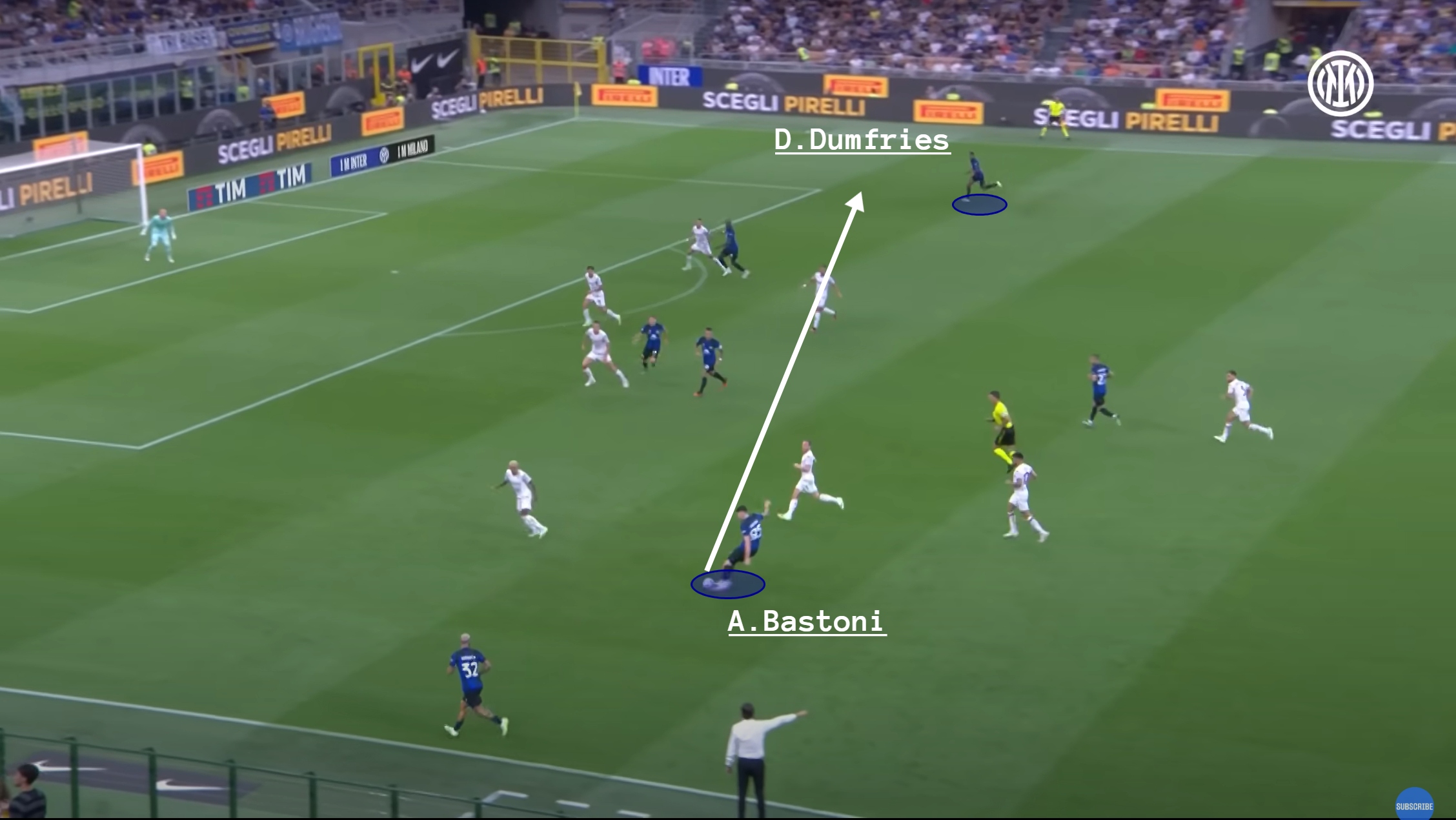
In a derby showdown against AC Milan, Inter’s intent to switch play was prevalent – sealing the game with a third goal that completely neutralized their rivals, after which the eventual winners would score two more.
The move began with Hakan Çalhanoğlu winning possession after an interception. The Turkish midfielder then combines with his teammates to receive possession in space on the right flank.
He spots Lautaro Martinez on the opposite side with acres of green grass ahead of him. To prevent Milan from recovering, Çalhanoğlu plays an early cross-field pass to Martinez, who confronts Simon Kjær one-versus-one.
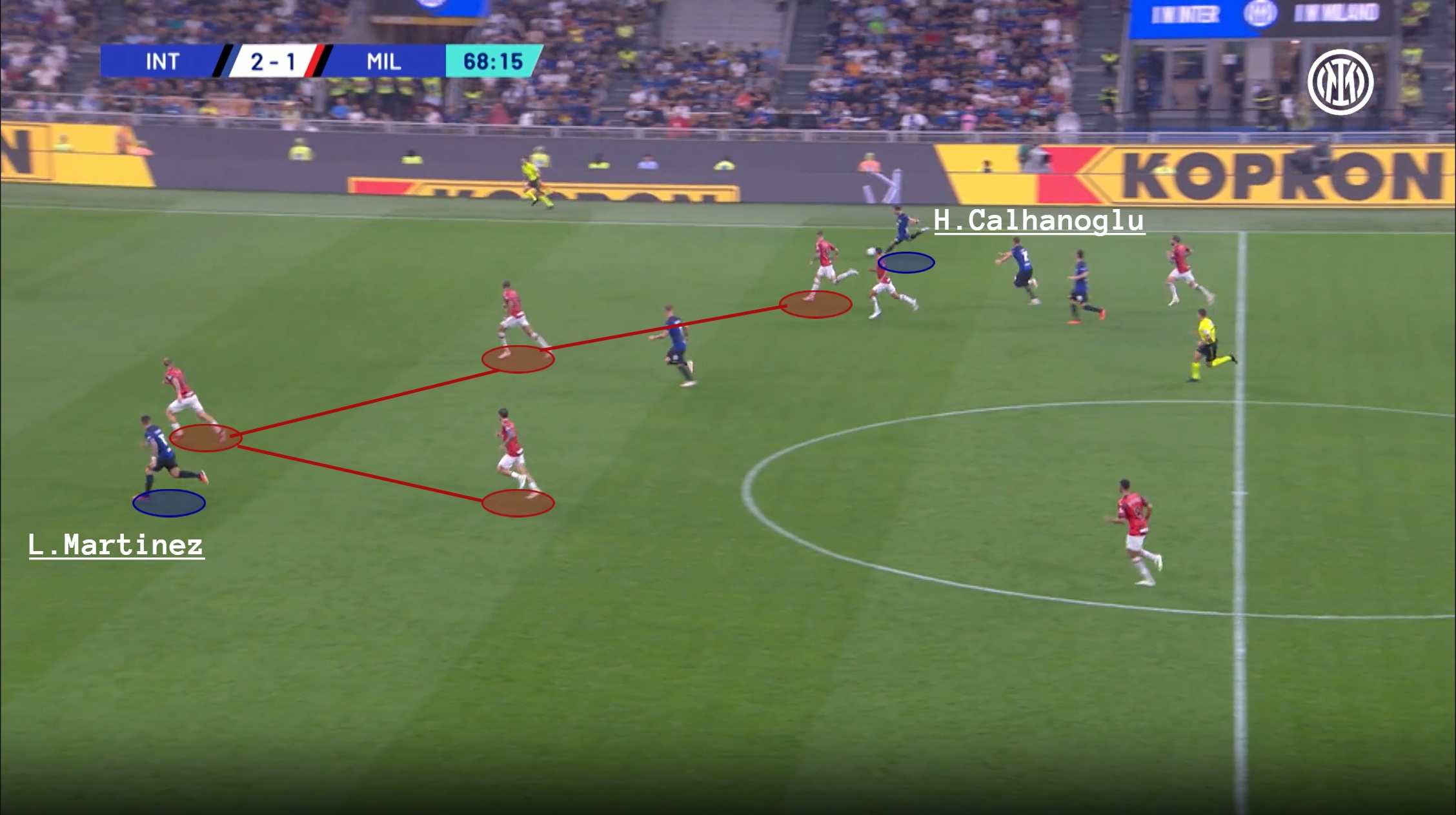
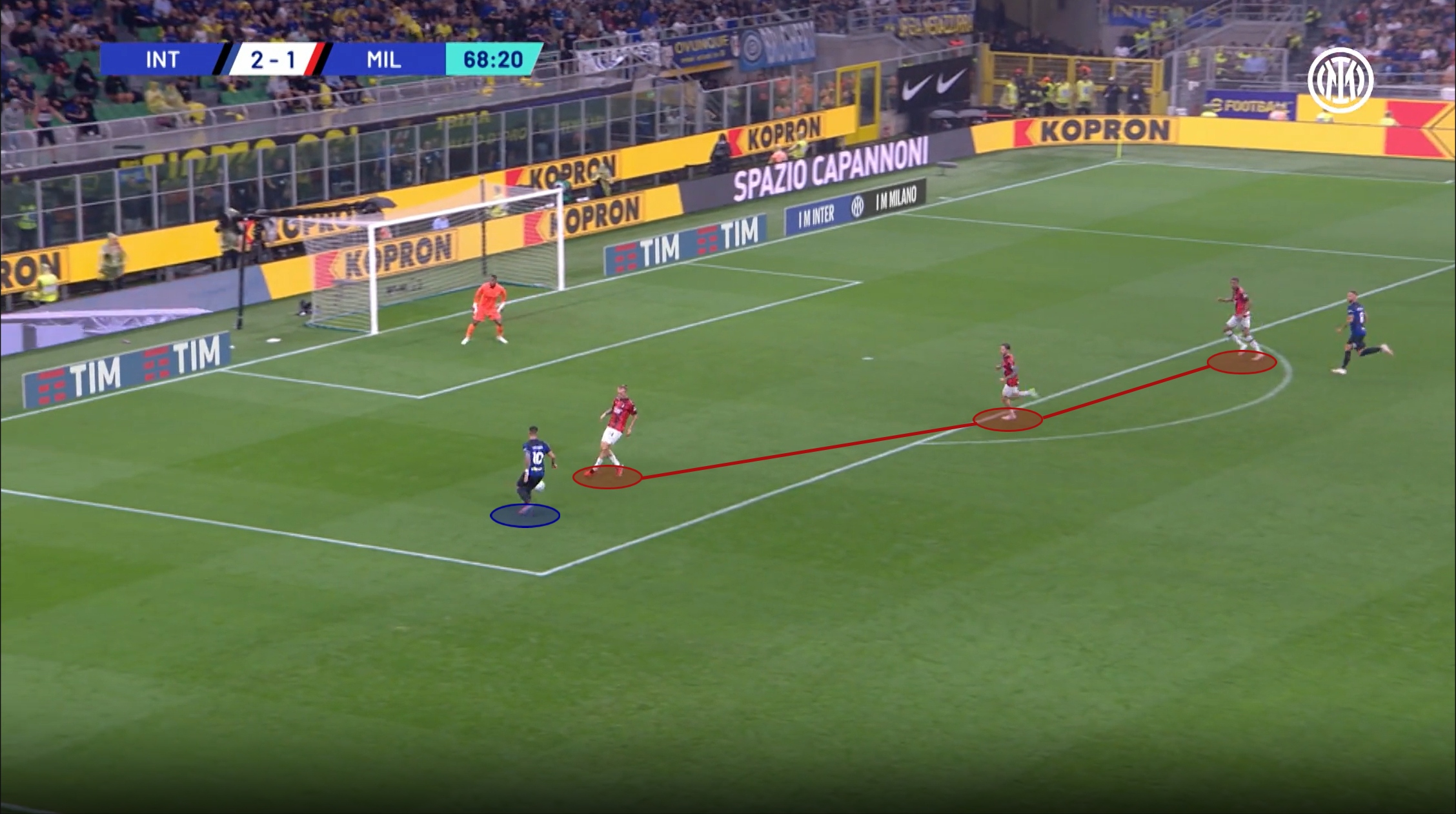
Notice the gap between the defenders that has opened. A seam run by an Inter player between the Milan defenders would have been dangerous, however, this does not transpire. So, Martinez wisely holds up play, waits for support, and shifts the ball to Henrikh Mkhitaryan, who scores.
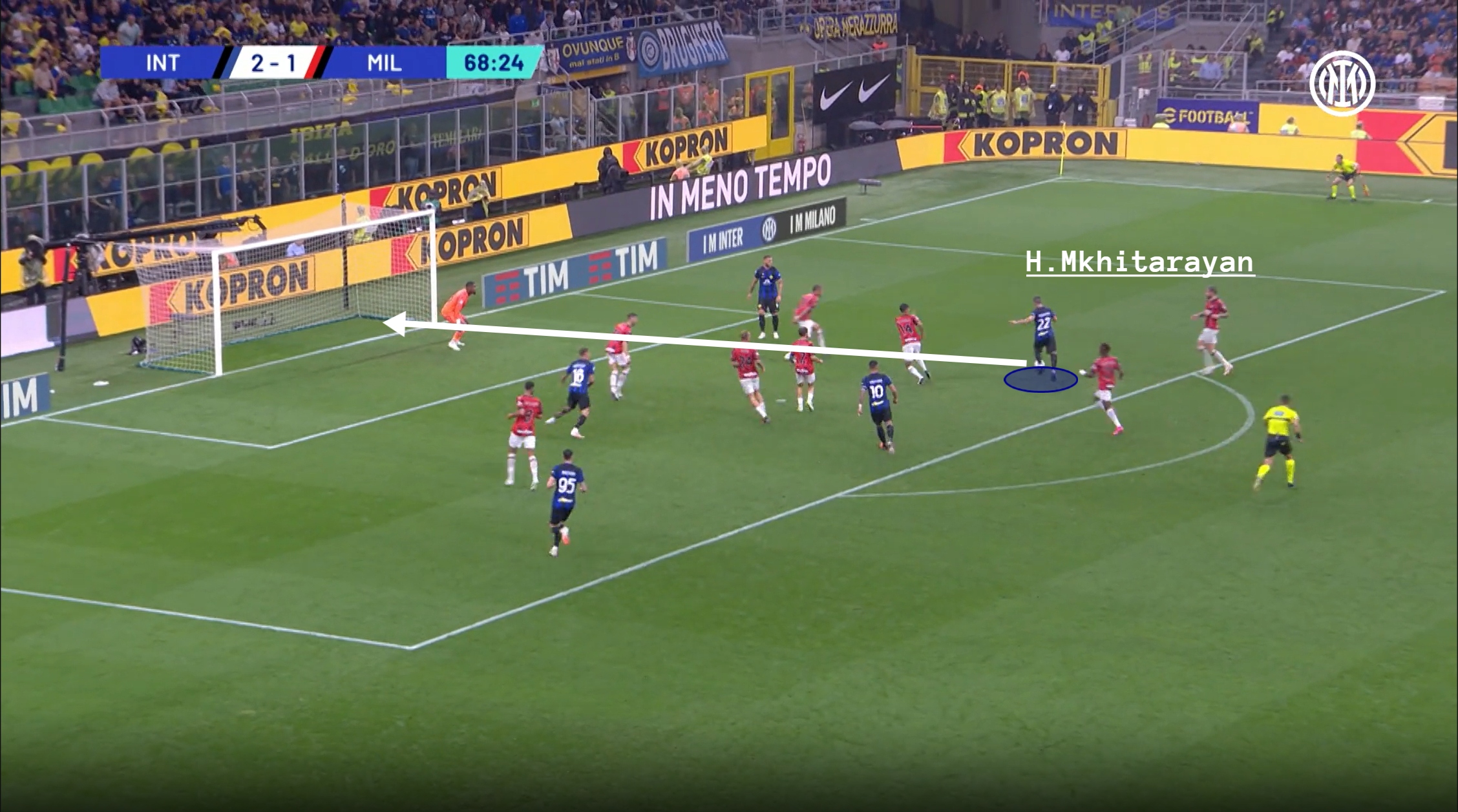
In the Champions League round of 16 first leg against Atlético Madrid, Inter develop an attack from the defensive third of the pitch, with Bastoni finding Matteo Darmian after collecting a pass from the goalkeeper.
The Italy defender plays a first-time diagonal pass to the feet of Lautaro Martinez, who swiftly shifts it to Henrikh Mkhitaryan. The midfielder spots the run of Federico Dimarco on the wing – completing a sequence that sees Inter switching possession from the right to the left wing.
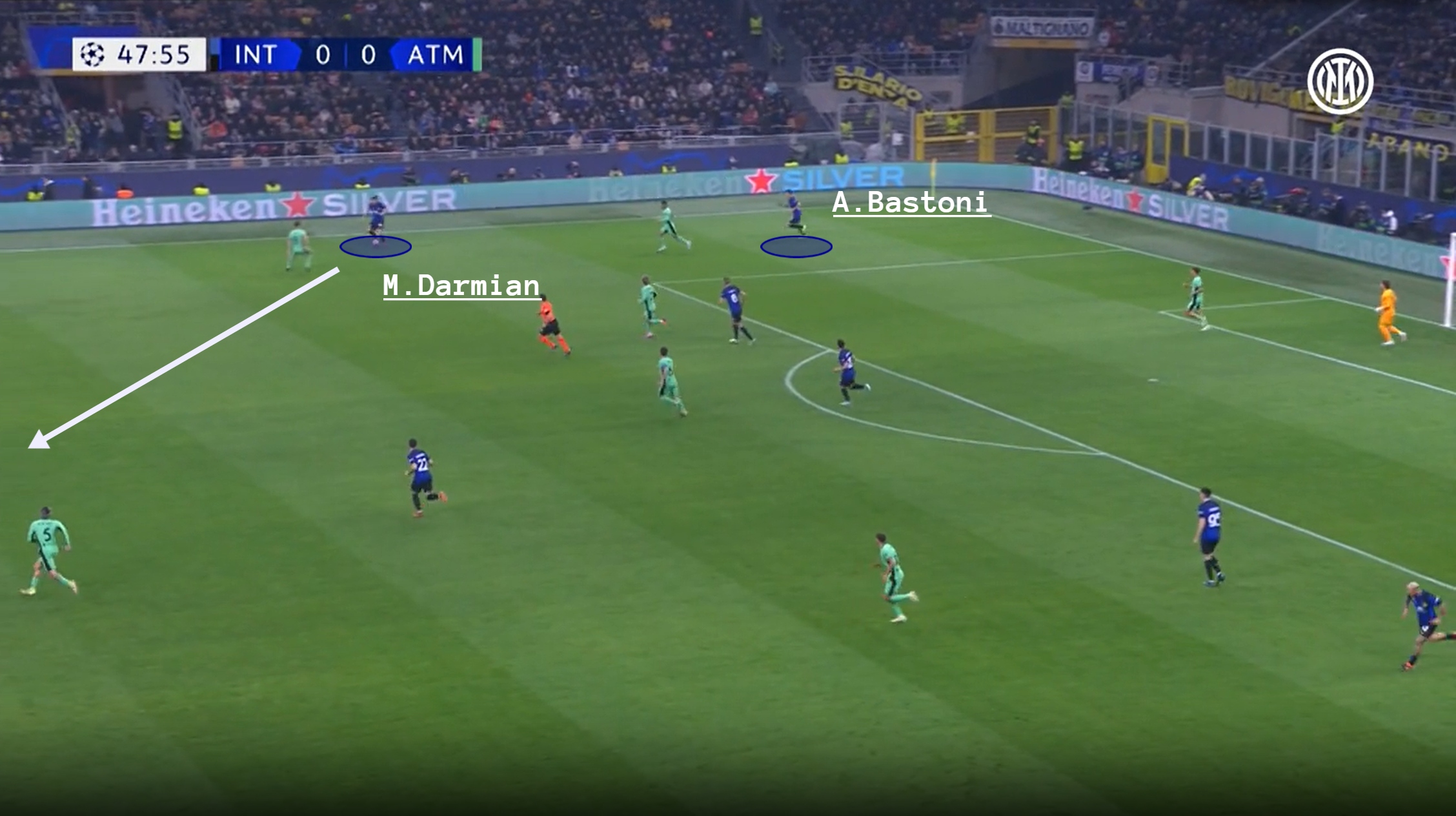
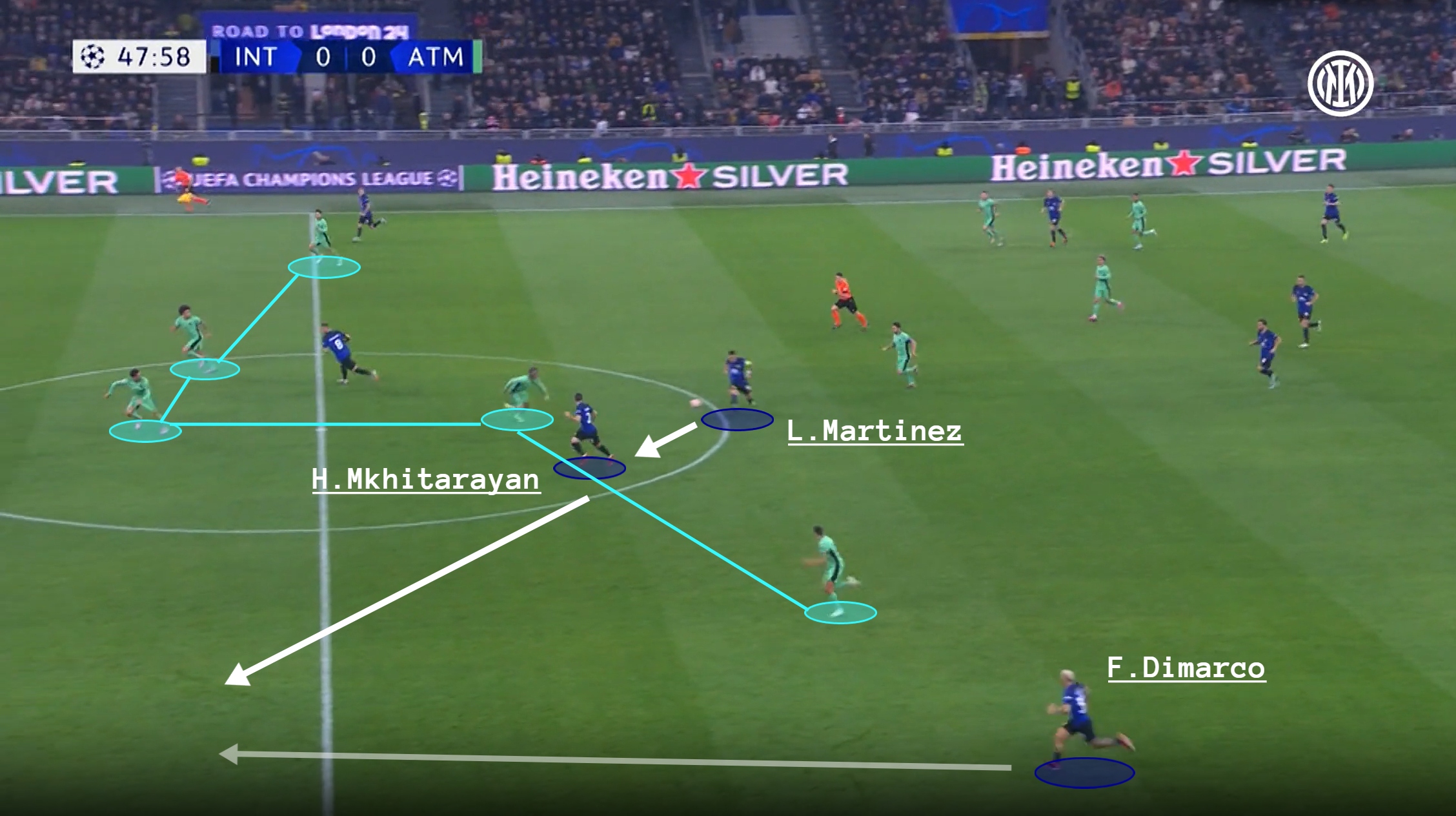
Dimarco delivers an accurate early cross – another feature of Inter’s moves – into the penalty box for Marko Arnautović, who wastes a golden opportunity that would have provided Inter the lead.
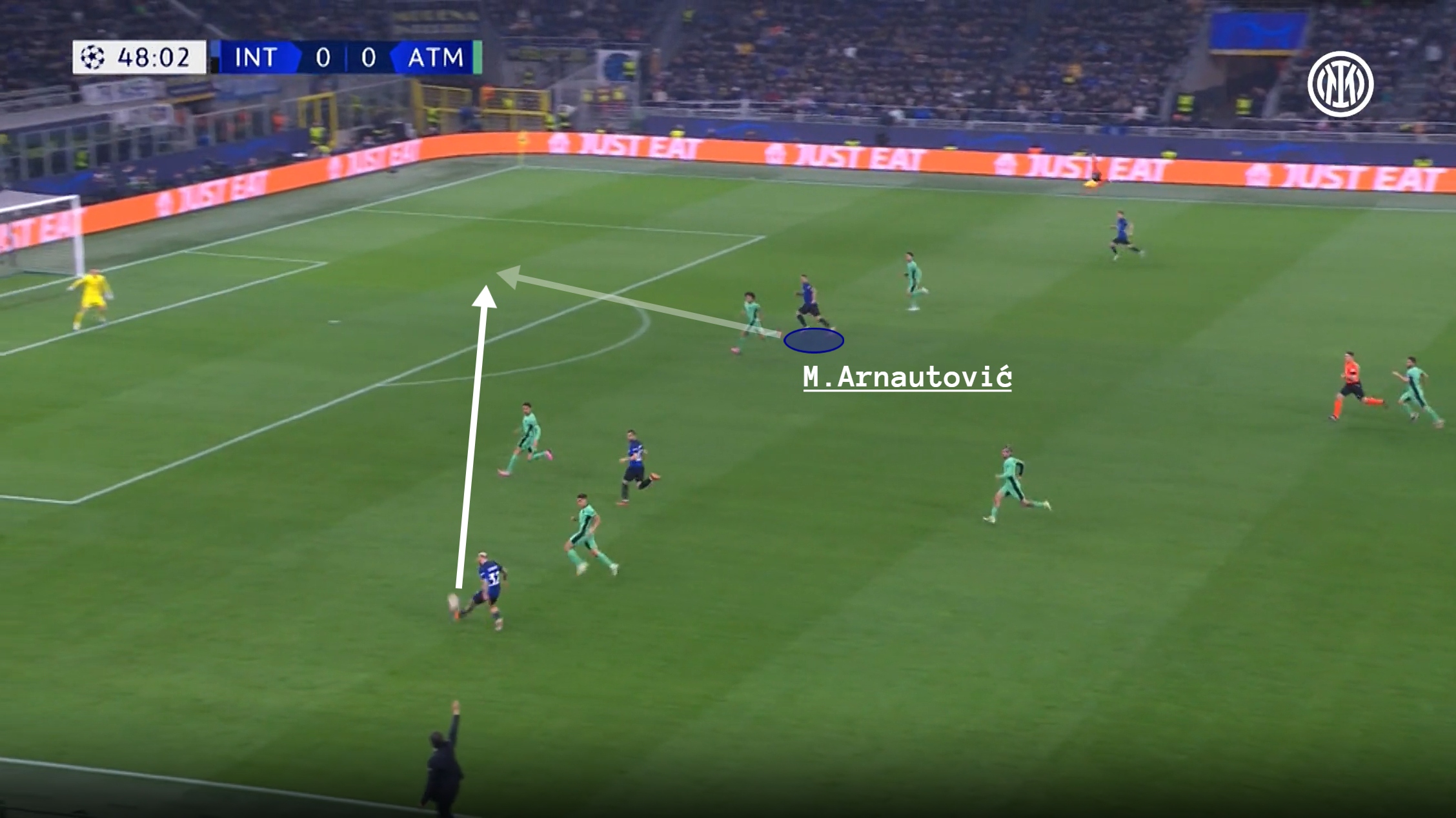
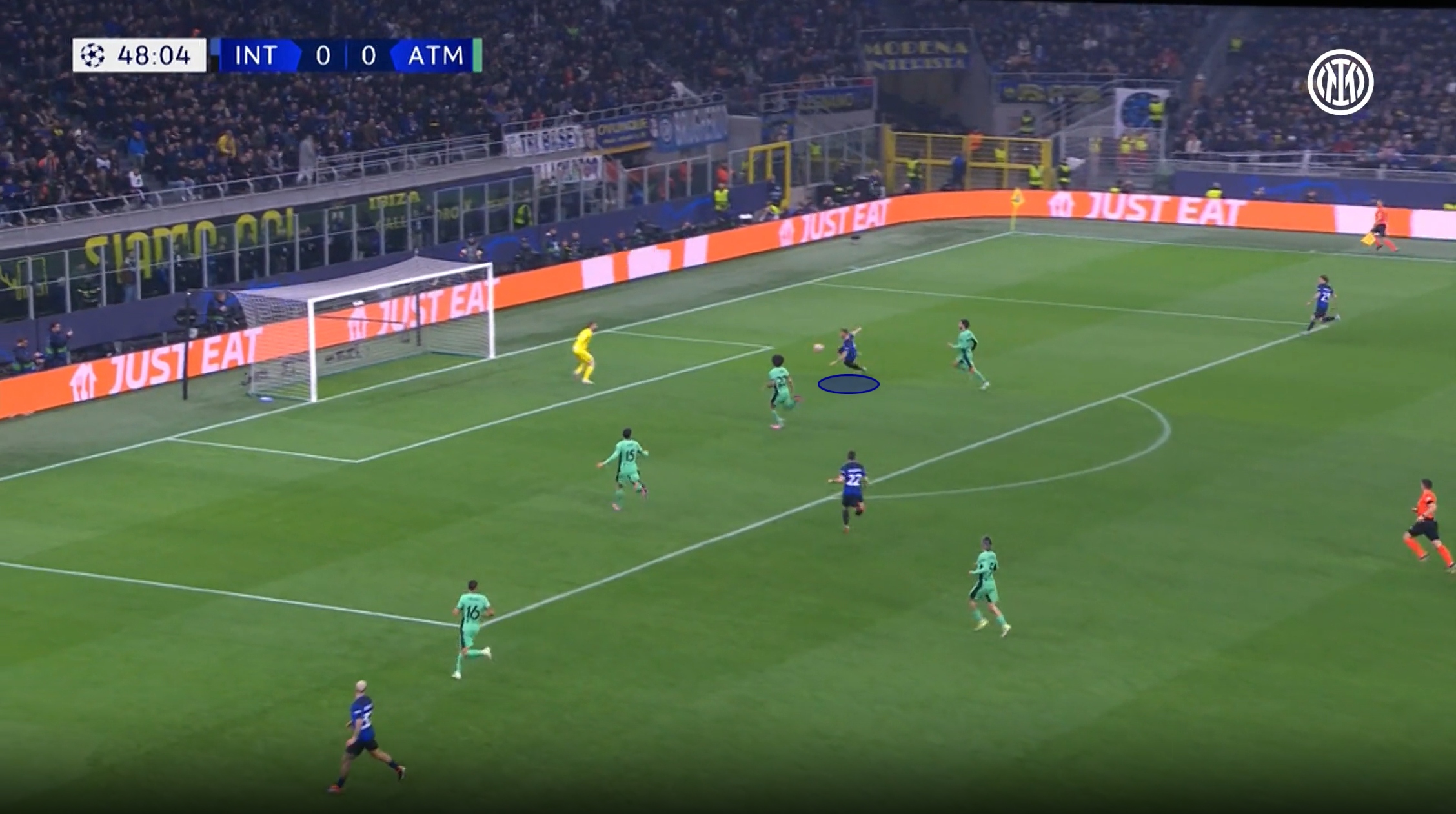
One of Many in the Arsenal
The switch of play, if performed effectively, is a lethal weapon that many elite teams have in their artillery. If teams can drag the opponents to one side of the pitch, it can open acres of space to exploit, which Inter has proved to be a master at.
Despite being one of the favorites for winning the Champions League, having made it to the finals last year, Inter was knocked out by Atlético Madrid in the round of 16. Nevertheless, Inzaghi has developed a menacing team that is running away with the Serie A title.
The next time you tune into a match featuring the Nerazzurri, do not forget to keep an eye out on their switches of play, from which they will probably create plenty of attacking opportunities.




